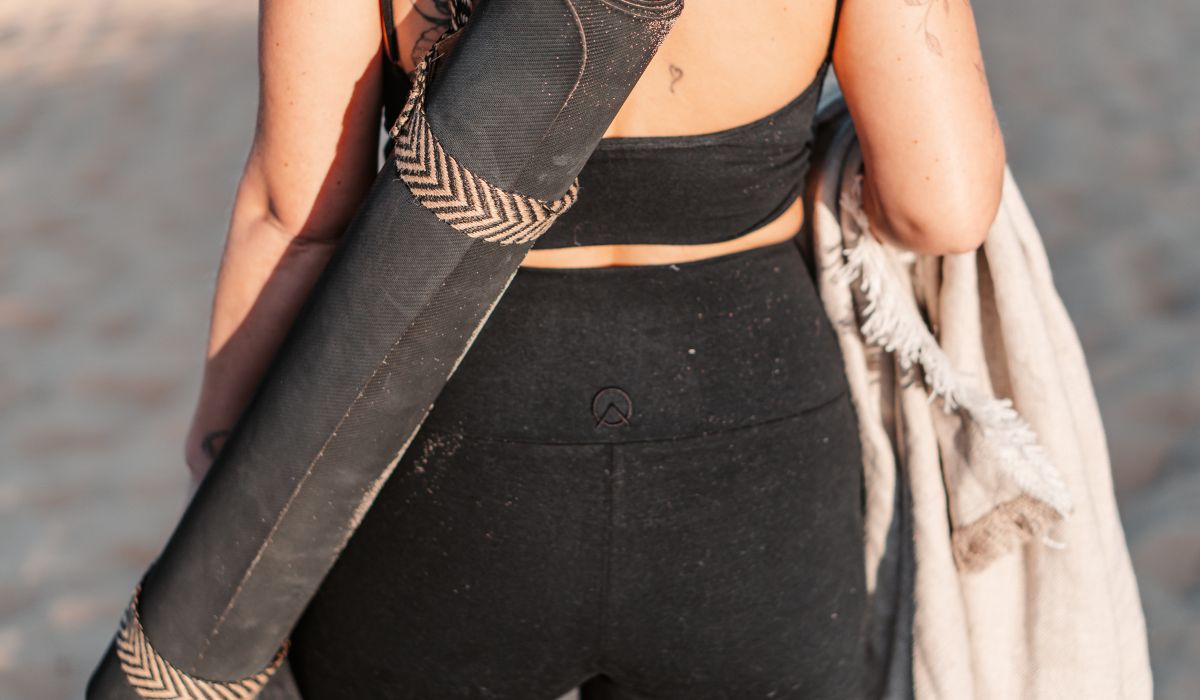Is Cork Antibacterial?
In a word, yes! The cork used in our sustainable yoga products is the bark from a tree called Quercus suber or simply, the Cork Oak tree.
There are many reasons that we chose cork for our products, including its sustainable harvesting method (cork trees can have the bark removed without damaging the tree so no trees are ever cut down during harvest) and you can read more about why we love cork here.
However, there is one incredible aspect of cork that we get asked about a lot, and that is the antibacterial action and how it works so we decided to break down the science, to bring you the evidence on how cork is antibacterial.

What Makes Cork Antibacterial?
We need to take a deep dive into the cellular level of the cork tree and look at its chemical structure and in particular a component of the plants called phenols. Plants and their extracts are known to contain bioactive compounds with antimicrobial properties and in cork the main constituent with these useful compounds is found in suberin. Suberin is a waxy substance in the tree that functions as a barrier to movement of water and nutrients as well as providing physical and chemical protection, bacteria inhibition and adaptability to both internal and external stressors to help the tree adapt and thrive in it's environment.
If we dive a little deeper we can isolate phenols as the main molecular compound in suberin which give it these qualities, and that research has concluded is responsible for the antibacterial action of cork. Phenols are a compound found in many plants that are classed as a secondary metabolite, which means that although it isn’t essential for the plant to live and reproduce, it plays an important role in its environmental interactions, such as protection against predators and adapting to stress responses.

Research on cork
Because plants produce these secondary metabolites for protection, there are a broad range of activities that they can contribute too, including fighting against pathogens such as bacteria, and these phenols are still present in the corks bark when it is harvested.
Studies have been performed to test the antibacterial activity of cork extract from suberin and in particular the effects of the phenolic extracts on different types of bacteria. There are two main classes of bacteria, Gram-positive and Gram-negative. Gram-negative bacteria are surrounded by a thin cell wall made of peptidoglycan (polymer consisting of sugars and amino acids), which itself is surrounded by an outer membrane. Gram-positive bacteria lack an outer membrane but are surrounded by layers of peptidoglycan many times thicker than is found in the Gram-negatives.
Various suberin samples from cork display bactericidal activity against important Gram positive and Gram negative human pathogens, including both strong antimicrobial activity against Escherichia coli (Gram-negative) as well as staphylococcus aureus (Gram-positive).
Staphylococcus aureus, commonly referred to as staph, is the leading cause of skin and soft tissue infections in humans. Studies evaluating the antibacterial performance of cork resulted in a bacterial reduction of almost 100% (96.93%) after 90 minutes of incubation with cork extract.

Why choose cork?
The powerful properties of this natural substance in cork show what can be possible if we work with our planet, instead of against it by choosing sustainable alternatives. Through understanding our natural world we learn that we can live in harmony with nature, without having to cut down trees or produce harmful chemicals.
The science behind corks antibacterial properties definitely stacks up and shows that cork can be used as a safe and sustainable alternative to other Yoga mat materials (although we still encourage regular cleaning of your Yoga mat to keep it clean and fresh.)
To learn more reasons why we choose cork you can read our here.
To shop our sustainable cork Yoga mat and 100% cork blocks click here.
References
https://academic.oup.com/femsle/article/363/3/fnv231/2594523
https://www.sciencedirect.com/science/article/abs/pii/S030881461001263X
https://www.sciencedirect.com/science/article/pii/S2590006419300651





